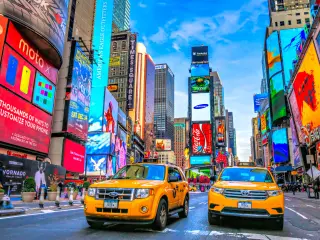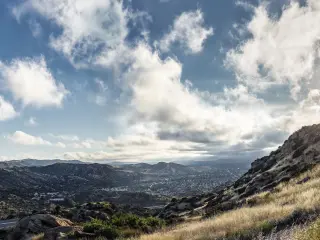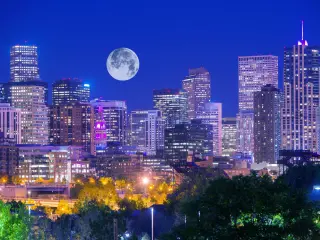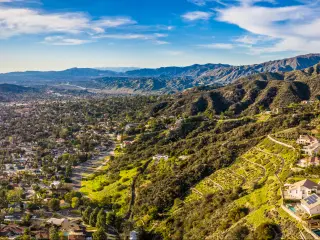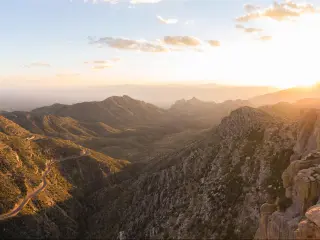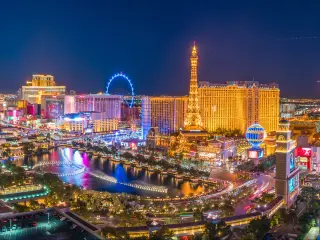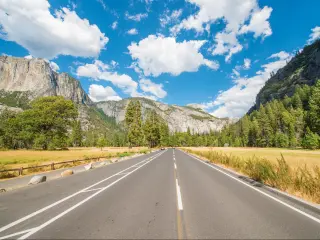Is Las Vegas Walkable: Our Guide to Exploring the City without a Car
Famous for its long-running residencies by music and theatre icons including Elton John, Celine Dion and Lady Gaga, Las Vegas is fittingly named "The Entertainment Capital of the World." From world-class casinos and glitzy entertainment to famous restaurants, everything will be within your reach in Sin City.
The Las Vegas Strip is home to many of the city's most famous sights and attractions, including the Fountains of Bellagio, the Luxor Hotel, New York-New York and the Venetian. The Strip is also a fabulous place to explore on foot both day and night.
With its lavish casinos, over-the-top resorts and the bright lights of the Strip, Las Vegas is seen by many as the "entertainment capital of the world". Keep on reading to find out how to explore the unforgettable city of Las Vegas without a car.
Is Las Vegas walkable?
Construction of the nearby Hoover Dam brought workers and money to Las Vegas in the 1930s, just as the state of Nevada legalized gaming - and the legendary entertainment center was born.
While the wider metropolitan area of the Las Vegas Valley stretches almost 30 miles from north to south, the part of the city that attracts millions of visitors each year is much smaller.
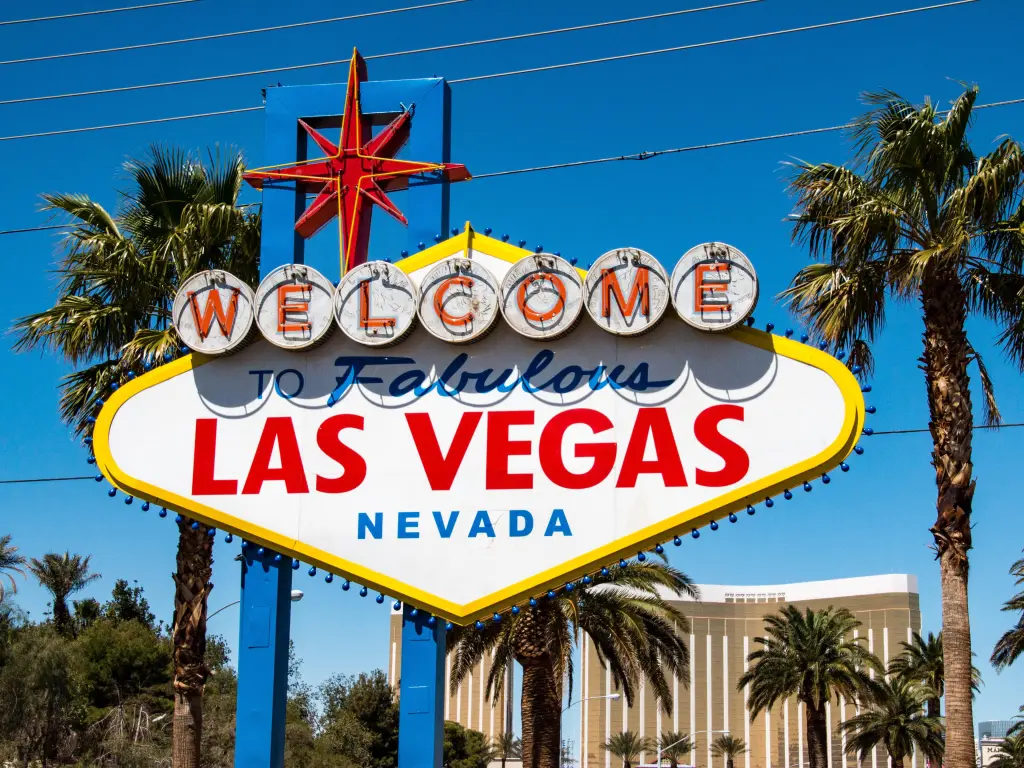
The Las Vegas Strip extends for around 4 miles along Las Vegas Boulevard, running north from the Welcome to Fabulous Las Vegas sign up to the STRAT Hotel, Casino & Tower. Downtown Las Vegas is another popular area of the city, located around 3 miles north of the northern end of the Strip.
You can walk the length of the Strip to immerse yourself in the over-the-top sights and sounds, though you'll want to stop along the way to enjoy the city's many attractions.
This doesn't mean that walking will be every visitor's first choice though. Las Vegas experiences sweltering temperatures for much of the year, and congestion can impact air quality. Read on to find out more about the alternatives to walking, too.
Best walking itinerary in Las Vegas
It's very straightforward to plan a walking route in Las Vegas, seeing as you'll probably be sticking to the Strip and Downtown areas. We've put together a 2-day itinerary that takes you to some of our top picks among the city's lavish resorts and casinos.
The Strip runs from north to south along Las Vegas Boulevard so you can explore the different attractions at a pace that suits you.
If you want to spend more than a brief time in each of the theme parks, casinos and other attractions on this list, this itinerary can be easily stretched out over three days (or longer) using the Deuce or the monorail to travel to and from your hotel.
The Strip is deceptively long (4 miles), so it's down to personal preference whether you walk all the way or use public transport for some of the way.We'd also recommend riding the Deuce or taking a taxi/Uber between the northern end of the strip and Downtown – the walk can be busy and takes you through parts of the city with a higher crime rate.
Day 1 Itinerary: South Strip and Central Strip
| Activity | What you'll be doing | |
|---|---|---|
| 1 | Arrival | Drive to South Strip |
| 2 | Park | Park safely at your hotel on the Strip |
| 3 | Travel | Take the bus to the Welcome to Fabulous Las Vegas Sign |
| 4 | Visit | Visit Shark Reef Aquarium at Mandalay Bay |
| 5 | Visit | See the Sphinx at the Luxor Las Vegas |
| 6 | Visit | Explore Hershey's Chocolate World at New York-New York Casino |
| 7 | Lunch | Enjoy a meal at Eataly at the MGM Grand |
| 8 | Walk | Head to Central Strip on foot |
| 9 | Shop | Enjoy retail therapy at the Forum in Caesars Palace |
| 10 | See | Visit the flamingos at the Flamingo Wildlife Habitat |
| 11 | Adventure | (Optional) Ride the zipline at the LINQ Promenade |
| 12 | Views | Admire the cityscape from the High Roller observation wheel |
| 13 | Check-in | Check into Bellagio and admire the Bellagio Fountains |
| 14 | Dinner | Have an opulent dinner at Le Cirque or Picasso at the hotel |
| 15 | Watch | Catch a show at Caesars Palace or see a superstar at Planet Hollywood Resort |
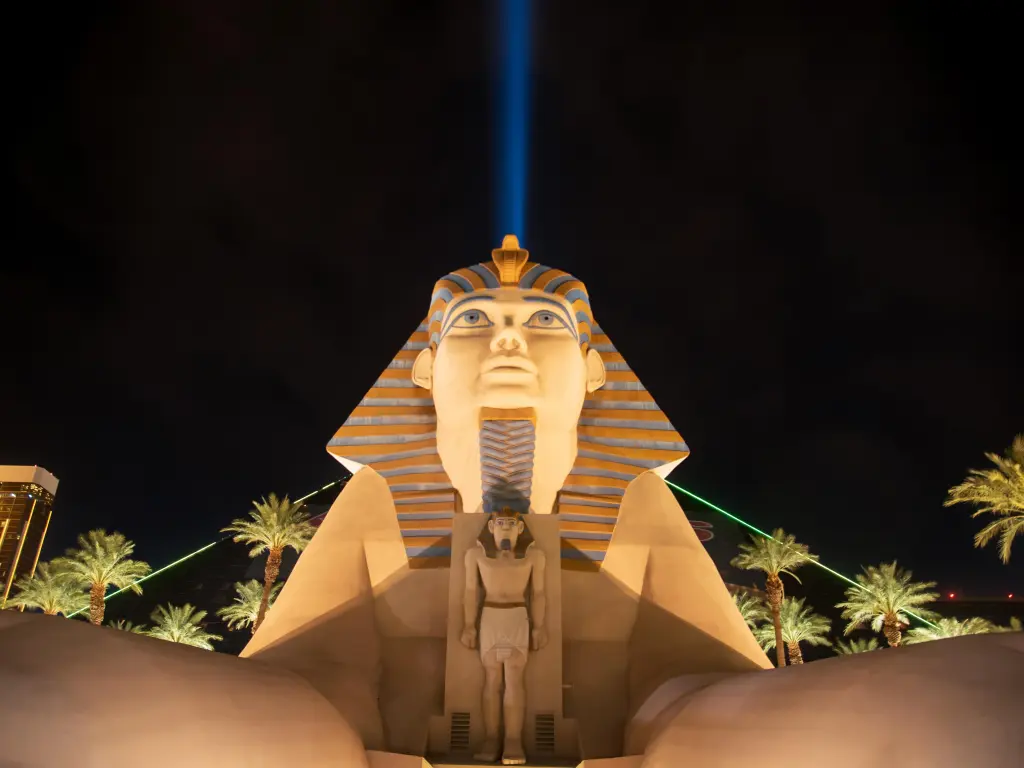
Day 2 Itinerary
| Activity | What you'll be doing | |
|---|---|---|
| 16 | Brunch | Head to Treasure Island for Senor Frog's Drag Brunch |
| 17 | Visit | Admire the wax sculptures at Madame Tussauds or ride a gondola at the Venetian |
| 18 | Visit | Have fun at the Adventuredome Indoor Theme Park at Circus Circus Hotel & Casino |
| 19 | Adventure | Ride the Big Shot at the top of the STRAT Hotel |
| 20 | Lunch | Enjoy a meal at the Top of the World at the STRAT Hotel |
| 21 | Departure | Return to your car and wave Sin City goodbye |
What makes Las Vegas walkable?
As you've already discovered, most of Vegas's attractions are located in one part of the city, making it easy to travel between your choice of destinations on foot.
The Strip is designed with leisure time in mind, and you won't struggle to find things to do on a short trip. The busy and often slow traffic can make it slow to drive between parts of the city, so walking or using public transport can make for a more relaxing time in the city!
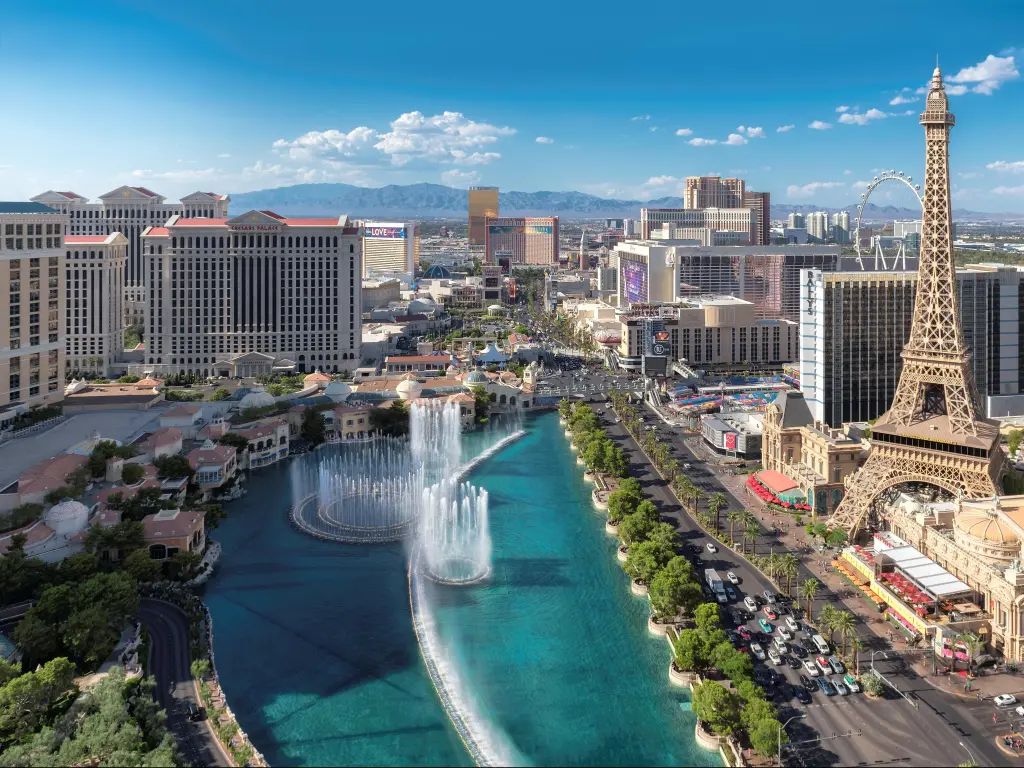
The wide pavements and frequent crosswalks or elevated walkways also mean that you won't have to worry about traffic as you walk between the many attractions of Las Vegas.
Even though Las Vegas is a walkable city, there are a few things to consider when you're planning your trip. Whether you walk all the way, use the bus, or drive between certain attractions is all down to personal preference, and possibly the time of year that you visit.
Most walkable areas in Las Vegas
The Strip is the most walkable (and walked) part of Las Vegas, and the place that most visitors head to first. But if you're spending a little longer in Sin City there are other places to explore on foot.
Continue north past the end of the Strip and you'll reach Downtown, the original heart of Las Vegas. Here you'll find attractions including the Mob Museum and the Fremont Street Experience, as well as the fascinating Neon Museum which showcases many of the city's vintage illuminated signs.
If you're in a hurry, or if you're keen to stay out of the heat, the attractions of Downtown are also connected by the Loop bus which you can read more about below.
You might also like to head out to Summerlin for a different taste of Las Vegas. You'll need to drive or look up local bus services to reach the suburb, but this less urban neighborhood is home to several golf courses, including Bear's Best Las Vegas, as well as the Donald W Reynolds Cultural Center and Warsaw Ghetto Remembrance Garden.
Public transport options in Las Vegas
Most of the resorts and casinos along the Strip offer reasonable parking lots, which makes it easy to shuttle between attractions if you don't want to walk too far. If you'd prefer to see the city without using a car, though, Las Vegas has some great public transit options.
The most visible public transport option in Las Vegas is the Monorail, which runs along an elevated track parallel to the Strip for almost 4 miles. This means you can avoid delays due to heavy traffic at ground level.
There are also two bus routes that are popular with tourists: the Downtown Loop and the Deuce.
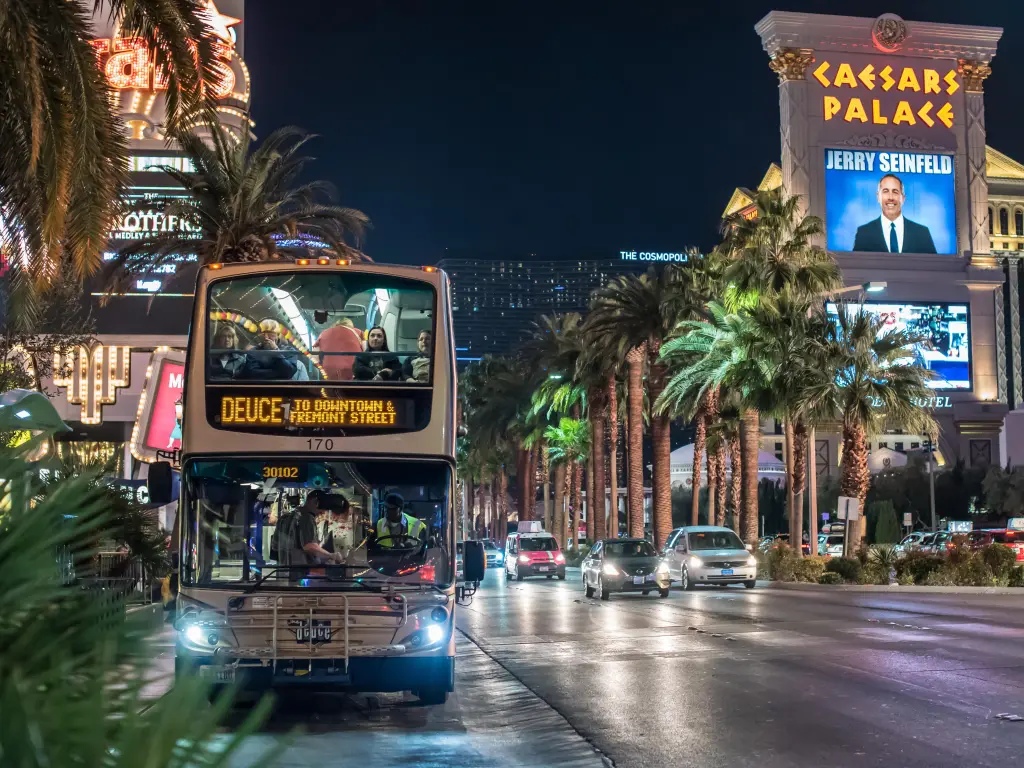
The Deuce runs up and down the Strip, starting south of the Welcome to Las Vegas sign and running all the way to the Fremont Street Experience. It runs night and day, with a bus every 10 to 15 minutes until 1:00am then a less frequent service through the night.
A 1-day pass for the Deuce costs $8 at the time of writing.
The Downtown Loop is free and connects major attractions like Symphony Park, the Fremont Experience and the Mob Museum. It starts at The STRAT and runs through the Arts District too.
The only catch is that it doesn't run all day – it currently operates 3:00pm to 10:00p, Thursday, Friday and Saturday and 11:00am to 6:00pm the rest of the week.
As with any major city, there's also the option to take a taxi, which is usually more convenient than waiting for public transport especially if you're carrying luggage. Uber also operates in Las Vegas, and is often significantly cheaper than a traditional taxi cab.
Parking in Las Vegas
Compared to other major cities, it's relatively easy and affordable to park in Las Vegas. There are plenty of places to park in Las Vegas, with large parking lots attached to many of the city's resorts.
In the past, it was common to find free parking at resorts, casinos, and on the street, but this has changed in recent years, so you'll now pay for most parking. As big cities go, it's not expensive – expect to pay around $20 for a full day in a parking garage or at your resort if you're staying on the Strip.
There are still a few places where you can park for free. These currently include Circus Circus, Sahara and Treasure Island. Check before you travel in case this changes.
If you're parking away from your hotel, just be aware that you can't take large baggage on the Deuce bus, so factor this in if you're hoping to park elsewhere for free then take the bus to your hotel.
If you have to pay for a taxi to take you from your free parking to your hotel, chances are you won't save much compared to simply parking at the hotel.
Is Las Vegas safe to walk around?
The tourist areas of Las Vegas are safe to walk around. Even with so many security cameras watching out across the casinos, though, pickpocketing can still happen, so keep an eye on your belongings.
Elsewhere in the city, you'll find districts with extremely high crime rates. The tourist Strip and Downtown attractions very quickly give way to neighborhoods that it's better to avoid, so stick to busy areas and pay attention to where you're walking if you decide to explore further afield.
Things you need to know about walking in Las Vegas
Walking in Las Vegas is relatively straightforward, as you've already discovered, but there are a few things to keep in mind if you plan to explore the city on foot.
The most obvious consideration is that this desert city gets very hot. Expect average daytime temperatures of 80 degrees Fahrenheit between April and October, rising to a sweltering 100 degrees or more in June, July, or August.
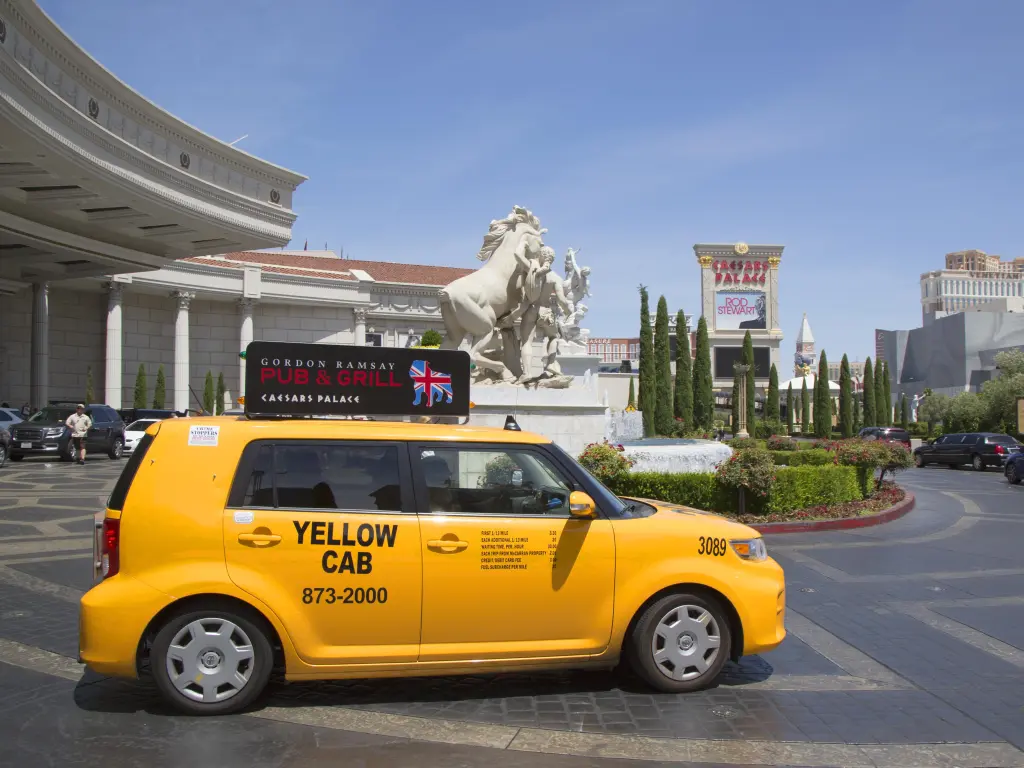
The air-conditioned casinos and resorts will be a welcome relief from these high temperatures. We'd recommend dividing your walking tour of Las Vegas into short, manageable segments, especially in the middle of the day. Be sure to carry water with you or take regular refreshment stops.
As big cities go, Las Vegas is very accessible. The main Strip has wide pavements, which are mostly well looked after, though they can get crowded at busy times.
You'll need to use the elevated walkways to cross some intersections, but these have elevators. All RTC buses are adapted to accommodate wheelchairs, and most attractions are wheelchair-accessible too - even the ziplines!
One final thing to be aware of is that taxis in Las Vegas have to be pre-booked - you can't just hail and ride.
Things to see in Las Vegas
There's so much to see and do in Las Vegas and you will find some of the most famous ones included in our itineraries above. If you are looking for more places to visit, here are a few of our top tips to get you started with your planning.
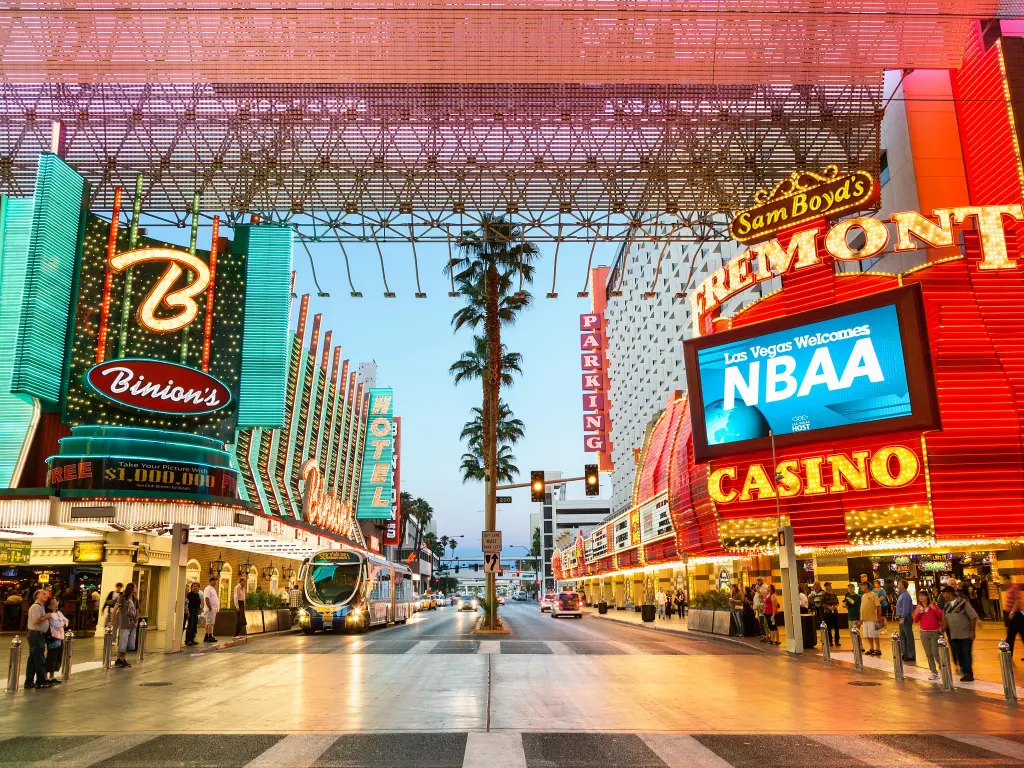
- Fremont Street Experience - Located in downtown Las Vegas, Fremont Street is known for its pedestrian mall and overhead LED canopy, which showcases spectacular light shows. This area combines vintage Las Vegas charm with modern entertainment, including live music and street performers.
- Eiffel Tower Experience - This hotel features a half-scale replica of the Eiffel Tower, offering an observation deck with panoramic views of the city. Visitors can also enjoy dining in the restaurant located within the tower for a unique Las Vegas experience.
- The Mirage Volcano - This free outdoor attraction in front of The Mirage Hotel features a dramatic volcanic eruption show with fire, sound effects, and music. It's a captivating display that symbolizes the dynamic and explosive energy of Las Vegas.
- The Neon Museum - This unique museum is dedicated to preserving and displaying iconic Las Vegas neon signs. It offers a glimpse into the city's glittering history and is particularly striking during nighttime tours.
- Mob Museum - Officially known as the National Museum of Organized Crime and Law Enforcement, this museum offers an insightful look into the history of organized crime and its impact on American society. It features interactive exhibits, historical artifacts, and engaging stories.
New and improved attractions and resorts spring up in Las Vegas every year, so even if you've visited the city before, you're sure to find something different to entertain you. Just make sure to give yourself plenty of time to admire the unforgettable sights of Las Vegas.

